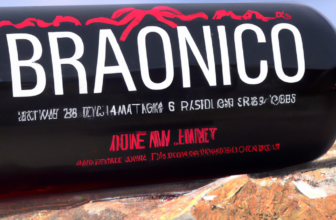
Exploring the Top Napa Wine Project’s 2019 Highlights
Reviewing Napa Wine Project’s 2019 Journey
As we reflect on the year that has passed, it is only fitting to take a moment to explore the top highlights of the Napa Wine Project’s 2019 journey. This renowned project, dedicated to documenting and preserving the rich history of Napa Valley’s wineries, has had an eventful and successful year.
One of the standout highlights of 2019 was the addition of several new wineries to the Napa Wine Project’s extensive database. With a meticulous approach to research and documentation, the project team added over 50 new wineries to their collection. This expansion not only showcases the growth and diversity of Napa Valley’s wine industry but also ensures that the project remains a comprehensive resource for wine enthusiasts and historians alike.
In addition to the growth in their database, the Napa Wine Project also made significant strides in their efforts to preserve the stories and legacies of Napa Valley’s wineries. Through extensive interviews with winemakers, vineyard owners, and industry experts, the project captured the essence of each winery’s unique journey. These interviews not only provide valuable insights into the winemaking process but also serve as a historical record of the region’s wine industry.
One of the most exciting developments in 2019 was the launch of the Napa Wine Project’s online platform. This user-friendly website allows wine enthusiasts from around the world to access the project’s extensive database and explore the rich history of Napa Valley’s wineries. With detailed profiles, captivating photographs, and engaging narratives, the website offers a virtual journey through the region’s wine heritage.
The Napa Wine Project’s commitment to education and community engagement was also evident in their 2019 activities. Throughout the year, the project organized a series of educational events, including wine tastings, seminars, and workshops. These events not only provided an opportunity for wine lovers to deepen their knowledge but also fostered a sense of community among Napa Valley’s wine enthusiasts.
Furthermore, the Napa Wine Project actively collaborated with local wineries and organizations to promote the region’s wine industry. By participating in industry events and supporting local initiatives, the project played a vital role in raising awareness about Napa Valley’s winemaking heritage. This collaborative approach not only strengthens the project’s credibility but also reinforces its mission to preserve and celebrate the region’s wine history.
Looking ahead to 2020, the Napa Wine Project has ambitious plans to continue their journey of exploration and preservation. With a focus on expanding their database, conducting more interviews, and further enhancing their online platform, the project aims to become an even more comprehensive resource for wine enthusiasts and researchers.
In conclusion, the Napa Wine Project’s 2019 journey was marked by growth, preservation, education, and community engagement. Through the addition of new wineries, the preservation of stories, the launch of an online platform, and active participation in the local wine community, the project has solidified its position as a leading authority on Napa Valley’s wine history. As we eagerly anticipate the project’s future endeavors, we can be confident that the Napa Wine Project will continue to play a vital role in celebrating and preserving the rich heritage of Napa Valley’s wineries.
Unveiling the Hidden Gems of Napa Wine Project’s 2019 Journey

Reviewing Napa Wine Project’s 2019 Journey
Napa Valley is renowned for its exquisite wines, attracting wine enthusiasts from all over the world. In 2019, the Napa Wine Project embarked on a journey to uncover the hidden gems of this prestigious wine region. With a mission to document and preserve the history of Napa Valley wineries, the project has become a valuable resource for wine lovers and historians alike.
One of the highlights of the Napa Wine Project’s 2019 journey was the discovery of lesser-known wineries that are producing exceptional wines. These hidden gems may not have the same level of recognition as some of the more established wineries, but their dedication to quality and craftsmanship is evident in every bottle. Through meticulous research and tastings, the project team identified several wineries that deserve recognition for their outstanding wines.
One such winery is Smith-Madrone, a family-owned and operated vineyard nestled in the Spring Mountain District. With a focus on sustainable farming practices and traditional winemaking techniques, Smith-Madrone produces wines that are a true reflection of the terroir. Their Chardonnay and Cabernet Sauvignon have garnered critical acclaim, and rightfully so. The Napa Wine Project’s visit to Smith-Madrone was a testament to the winery’s commitment to excellence.
Another hidden gem discovered by the Napa Wine Project is Larkmead Vineyards. Located in the heart of Napa Valley, Larkmead has a rich history dating back to 1895. The winery’s commitment to sustainable farming and innovative winemaking practices has resulted in wines that are both elegant and expressive. The Napa Wine Project’s visit to Larkmead Vineyards showcased the winery’s dedication to producing exceptional Bordeaux-style blends that capture the essence of Napa Valley.
In addition to uncovering hidden gems, the Napa Wine Project also delved into the history of some of Napa Valley’s most iconic wineries. Through interviews with winemakers and extensive research, the project team unearthed fascinating stories that shed light on the evolution of these renowned establishments. From the pioneering efforts of Robert Mondavi to the legacy of Opus One, the Napa Wine Project’s exploration of these wineries provided valuable insights into the region’s winemaking heritage.
The Napa Wine Project’s 2019 journey was not limited to wineries alone. The project also explored the diverse range of grape varietals grown in Napa Valley. From the classic Cabernet Sauvignon to lesser-known varietals like Petit Verdot and Malbec, the team’s tastings and research highlighted the versatility and potential of Napa Valley’s vineyards. This comprehensive exploration of grape varietals added depth and richness to the project’s documentation of the region’s winemaking history.
In conclusion, the Napa Wine Project’s 2019 journey was a remarkable endeavor that unveiled the hidden gems of Napa Valley’s wine scene. From discovering lesser-known wineries producing exceptional wines to delving into the history of iconic establishments, the project provided valuable insights into the region’s winemaking heritage. By documenting and preserving this rich history, the Napa Wine Project has become an invaluable resource for wine enthusiasts and historians alike. As we raise a glass to the project’s achievements, we eagerly anticipate the next chapter in their journey of uncovering the treasures of Napa Valley’s wine world.
Analyzing the Success Factors Behind Napa Wine Project’s 2019 Achievements
Reviewing Napa Wine Project’s 2019 Journey
As we reflect on the accomplishments of the Napa Wine Project in 2019, it is important to analyze the success factors that contributed to their achievements. This article aims to delve into the key elements that propelled the project forward and made it a standout in the wine industry.
One of the primary factors behind the Napa Wine Project’s success in 2019 was their unwavering commitment to quality. From the vineyards to the winemaking process, every step was meticulously executed to ensure the production of exceptional wines. This dedication to excellence resonated with consumers and critics alike, establishing the project as a benchmark for quality in the Napa Valley.
Another crucial aspect of the Napa Wine Project’s success was their emphasis on sustainability. In an era where environmental consciousness is paramount, the project’s commitment to sustainable practices set them apart from their competitors. By implementing eco-friendly initiatives such as organic farming and water conservation techniques, they not only reduced their environmental impact but also appealed to a growing segment of environmentally conscious consumers.
Furthermore, the Napa Wine Project’s success can be attributed to their strong relationships with local growers and winemakers. By collaborating with experienced professionals in the industry, they were able to tap into a wealth of knowledge and expertise. This collaboration not only enhanced the quality of their wines but also fostered a sense of community within the Napa Valley wine industry.
In addition to their commitment to quality, sustainability, and collaboration, the Napa Wine Project also excelled in marketing and branding. They understood the importance of creating a strong brand identity and effectively communicating their story to consumers. Through engaging social media campaigns, informative website content, and participation in industry events, they successfully built a loyal customer base and garnered positive attention from wine enthusiasts worldwide.
Moreover, the Napa Wine Project’s success can be attributed to their ability to adapt to changing consumer preferences. They recognized the growing demand for unique and experiential wine experiences and responded by offering innovative tasting experiences and events. By constantly evolving and staying ahead of trends, they were able to capture the attention of a diverse range of consumers and maintain their relevance in a competitive market.
Lastly, the Napa Wine Project’s success can be attributed to their commitment to continuous improvement. They consistently sought feedback from consumers, critics, and industry experts, using it as a catalyst for growth and innovation. By actively listening to their audience and implementing necessary changes, they were able to refine their wines and elevate their overall brand.
In conclusion, the Napa Wine Project’s success in 2019 can be attributed to a combination of factors. Their unwavering commitment to quality, sustainability, and collaboration set them apart from their competitors. Additionally, their effective marketing and branding strategies, ability to adapt to changing consumer preferences, and commitment to continuous improvement propelled them to new heights in the wine industry. As we look forward to the future, it will be exciting to see how the Napa Wine Project continues to innovate and thrive in the years to come.






